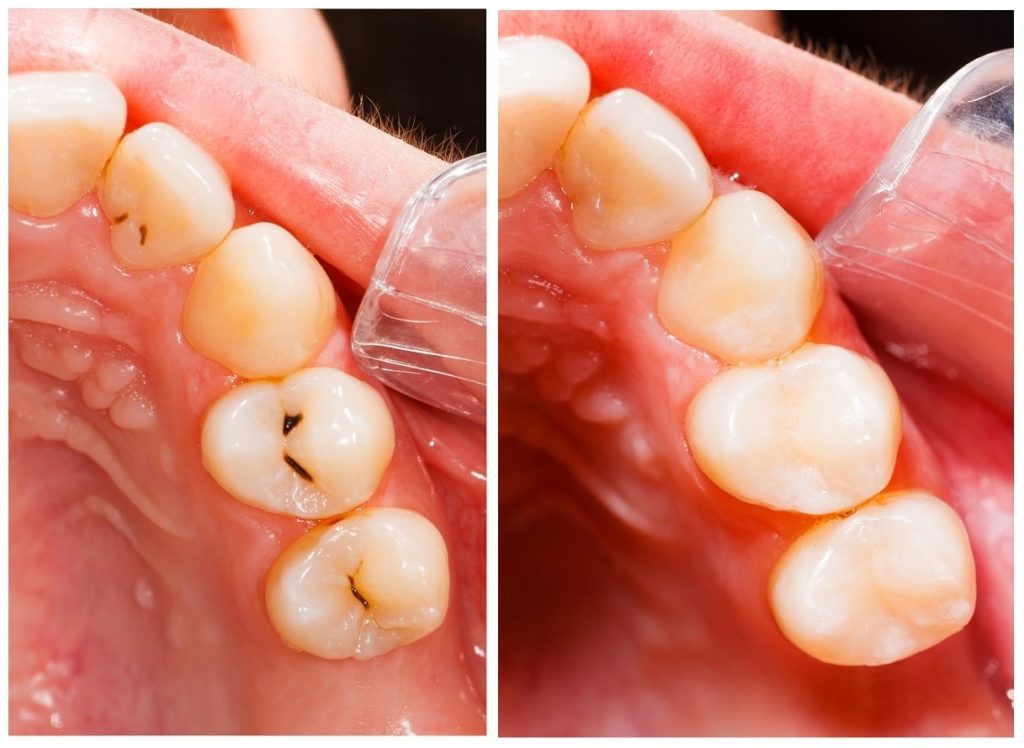Dental Fillings
Even though we may do everything we can in order to protect against the damage that is caused by injury and decay, our teeth may still occasionally encounter situations wherein they need to be restored to their normal structure, function or comfort levels. In many cases where the restoration needed isn’t too extensive, a dental filling may be appropriate. With a dental filling, the dentist will first remove decaying tooth material, clean the area and then close off the area to restore structure, function and comfort and to prevent bacteria from entering the area and causing further decay.

Different Dental Fillings
There are several different types of dental fillings, each designed to address specific situations–including the extent of the needed repair, where in the mouth the filling will go, whether the patient is allergic to certain types of filling material and what the patient can afford. Some of the more common types of dental fillings are:
- Gold. Gold fillings can be highly desirable because they are normally tolerated well by gum tissue and are very strong–they can sometimes last for twenty or more years. That said, gold fillings are not the most cosmetically attractive choice, they are the most expensive type of filling, and they do require multiple visits to the dentist. Gold fillings must be fabricated in a dental laboratory. They are then delivered to the dental office so they can be cemented into place in the patient’s mouth.
- Amalgam. Often referred to as silver fillings because of their color, amalgam fillings are a popular choice because they are resistant to wear and relatively inexpensive. Unfortunately, these too are not the most cosmetically attractive choice and are therefore not usually recommended for highly visible areas, such as on the front teeth.
- Composite resins. These fillings can be a more appropriate cosmetic choice as they can be matched to the natural color of your teeth. Composite resin fillings are placed directly into the tooth, shaped, hardened and then re-shaped further as needed. They are not usually recommended where large fillings are needed because they can wear or even chip over time. They are also not as durable as other filling materials, lasting roughly three to ten years, and are subject to staining from things like tobacco, coffee, tea and red wine.
- Porcelain. Normally called inlays or onlays, these fillings are another type that are fabricated in a dental laboratory and then bonded to the patient’s tooth. Like composite fillings, porcelain fillings can be matched to the natural color of the tooth, but they are more resistant to staining. They are also one of the more expensive types of fillings.
Generally speaking, fillings are recommended in cases where damage from decay or injury is not too extensive. Where more significant tooth damage has occurred, your dentist may recommend a crown instead of a filling. This will better ensure that the tooth’s structure and function is restored. Where tooth damage is the result of decay and this decay reaches all the way to the nerve, your dentist may recommend a root canal and crown.
Determining Whether a Dental Filling is Right for You
If you suspect that you may need a dental filling, it is important to contact your dentist right away and schedule a dental examination. Your dentist will use a small mirror to examine the surfaces of your teeth, and further inspect any abnormalities with special dental instruments. He may even recommend x-rays to better detect issues that may warrant a dental filling. Based on his assessment of the extent of the tooth damage, he will either recommend a dental filling or some other solution. Of course, it is important that you share with your dentist any concerns you may have and ask him any questions needed to better understand the process.
For more information about dental fillings, contact Dr. Nurminsky today.
